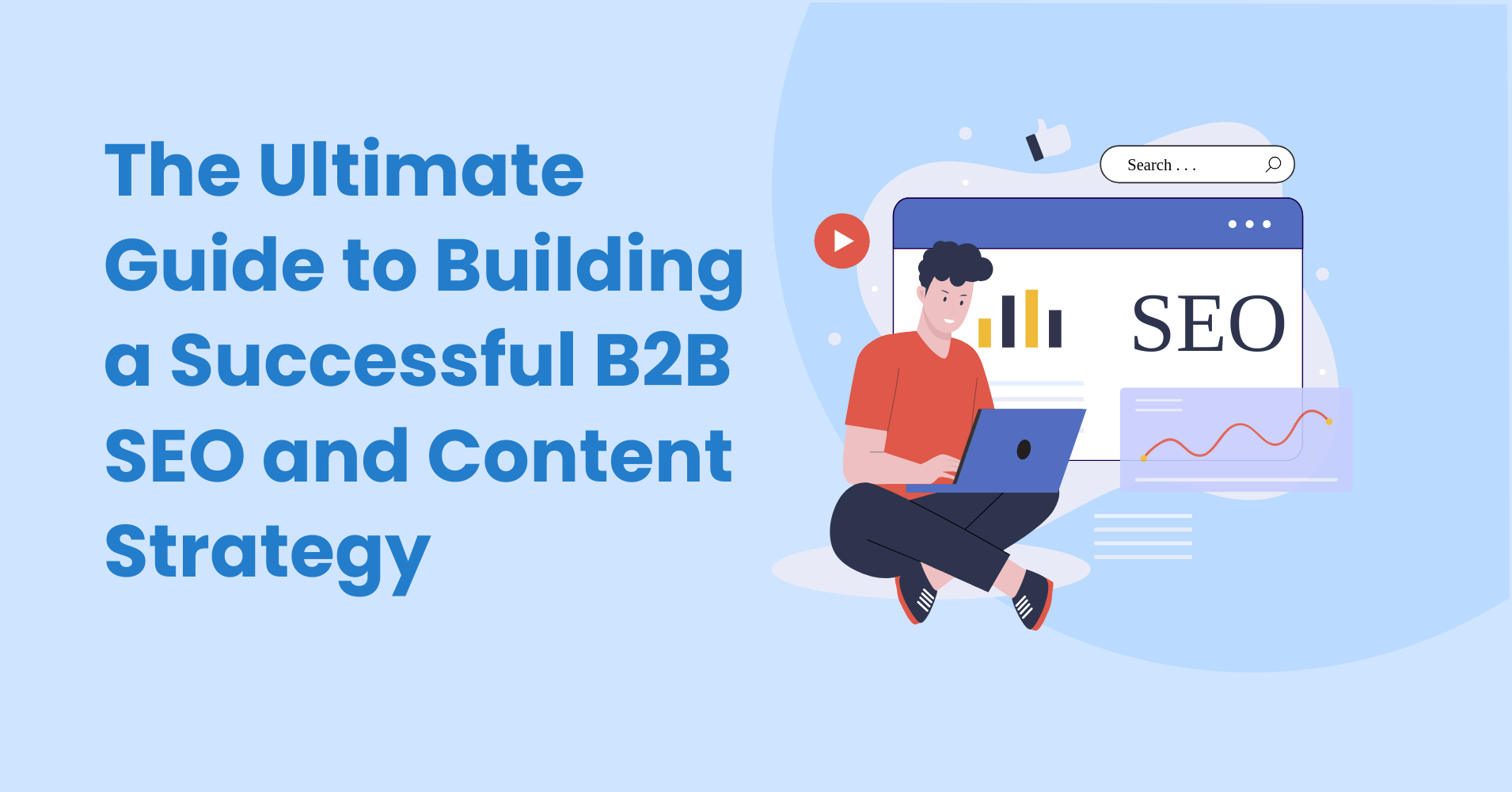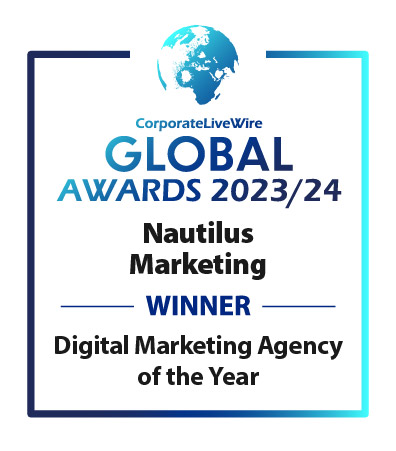In the quiet pulse of the digital landscape, there’s an undeniable truth: B2B companies must carve their presence through strategies that cut deeper than surface-level engagement. They must build connections that resonate with trust, authority, and a seamless flow of information. But it’s not enough to exist in the vast expanse of online noise. These connections must be forged in the depths of understanding, where each piece of content feels like an invitation—an offering that says, “We see you, we hear you, and we understand what you need.” Here, the intertwining forces of B2B SEO and content strategy emerge as tools and lifelines, guiding brands through the labyrinth of algorithms and fleeting attention spans.
Standing tall in the night like a lighthouse on the edge of a stormy sea, B2B SEO is the light that cuts through the fog, allowing businesses to be found amid the chaos, while the content strategy is the solid foundation upon which it stands—a beacon of value, relevance, and insight. Together, these pillars don’t just help businesses survive; they give them the strength to lead and to guide their audience toward solutions that matter. In this guide, we will explore how these two pillars unite to form a powerful B2B SEO strategy, ensuring long-term growth and success in an increasingly competitive marketplace.
The Importance of B2B SEO in 2024: Beyond Just Traffic
Before we delve into the specifics, it’s crucial to understand why B2B SEO holds such significance in today’s digital ecosystem. Unlike B2C, where impulse buys and emotional decisions are more frequent, B2B buyers are more methodical. They seek out value, perform extensive research, and are driven by long-term partnerships rather than one-off transactions. This fundamental difference changes the game for SEO in the B2B space.
The core of a successful B2B SEO strategy is not just about driving traffic but attracting the right audience—decision-makers actively looking for solutions, partnerships, and products that align with their business goals. SEO becomes the bridge between your content and the people who need it most.
But the real strength of B2B SEO lies beyond the top of the funnel. When optimised thoughtfully, it nurtures leads, builds credibility, and strengthens your business’s positioning as an industry leader. It’s the steady heartbeat behind every blog, white paper, and case study that signals to your potential clients: “We understand your needs.”
SEO, in this sense, becomes more than just a strategy—it’s a finely tuned compass, guiding the right people to the right places, with decision-makers scrolling through the vast expanse of digital noise, looking for something that resonates. With well-optimised content, your business becomes the lighthouse in the fog, illuminating the path toward solutions that genuinely meet their needs. It’s not about casting a wide net but weaving a web of relevance, where every keyword, every piece of content becomes a thread connecting your expertise to their pain points.
This is where B2B SEO transforms from a technical task into an art form—one that doesn’t just draw attention but pulls prospects into a narrative that speaks directly to their challenges, guiding them seamlessly toward trust and partnership.
Crafting a Comprehensive B2B SEO Strategy: The Foundation
Like any well-built structure, a B2B SEO strategy must be constructed on a solid foundation. This begins with deep keyword research, understanding not only what your potential clients are searching for but also how they frame their queries at different stages of their journey. With a B2B audience, searches are often more complex, focusing on industry-specific terms, pain points, and solution-driven queries. Keywords like “enterprise software solutions” or “B2B procurement best practices” are likely to appear more often than general keywords.
Step 1: Intent-driven Keyword Research
The first pillar of your B2B SEO strategy involves identifying intent-driven keywords. Think of your buyers at different stages of their journey—from discovery to decision-making. Keywords should reflect these stages. For instance:
At the awareness stage, focus on “what is” or “how to” keywords.
During consideration stage, concentrate on comparative and solution-based searches.
At the decision-making stage, optimise for specific branded terms or “best in class” services.
This framework ensures that your business appears in search results at every critical juncture of the buyer’s journey. Each keyword should serve as a stepping stone leading them deeper into your world.
Step 2: On-page Optimisation
On-page optimisation is where the marriage between B2B SEO and B2B content strategy becomes evident. By ensuring each page, whether a service overview or a thought leadership article, is fully optimised, you lay the groundwork for search engines to not only find your content but deem it valuable.
This involves optimising meta titles, descriptions, and headers, ensuring that your keywords are placed naturally within the text while maintaining a clear and authoritative tone. Internal linking also plays a key role here, guiding users to other valuable content on your site, increasing dwell time, and sending positive signals to search engines.
Step 3: Technical SEO
While keyword research and on-page optimisation tend to be the more visible components of a B2B SEO strategy, technical SEO underpins it all. Ensuring your site is fast, mobile-friendly, and secure not only improves user experience but also enhances your site’s overall SEO performance. Core Web Vitals, clean URL structures, and properly implemented schema markup are all essential to make sure your site is easily crawled and indexed.
Aligning SEO with a B2B Content Strategy: Speaking Directly to Your Audience
Once the technical foundations of B2B SEO are laid, the next step is aligning it with a compelling B2B content strategy. Content in the B2B space isn’t just filler—it’s a conversation. Your audience is looking for in-depth knowledge, innovative insights, and real-world solutions to their problems. Thus, every piece of content should be created with the end goal of answering the questions and addressing the concerns of your potential clients.
Step 1: Create Evergreen Content
Evergreen content is the backbone of any B2B content strategy. Think long-term guides, comprehensive whitepapers, or resource-rich blog posts that will remain relevant for years to come. This type of content not only continues to attract traffic but also builds trust with your audience over time, positioning your brand as a thought leader in your industry. By pairing evergreen content with a strong B2B SEO approach, you ensure that these valuable resources are easily discoverable and continue to perform well long after their initial publication.
Step 2: Leverage Case Studies and Testimonials
One of the most effective forms of content for B2B businesses is case studies. These are real-world examples that showcase your solutions in action, providing tangible proof of your success. When potential clients see evidence of how you’ve helped others in similar positions, it builds trust and reduces any friction in the decision-making process.
By integrating case studies into your B2B SEO strategy, you can target highly specific, solution-driven keywords. For instance, a company specialising in SaaS solutions might target “enterprise SaaS integration case study” to capture the attention of decision-makers looking for a similar solution.
Step 3: Thought Leadership and Industry Insights
B2B clients are often looking for partners who can not only solve their problems but also lead them into the future. That’s where thought leadership content comes into play. By publishing in-depth articles, whitepapers, or even hosting webinars, you’re not just addressing their immediate needs but offering them a vision of where their industry is headed.
Optimising these pieces for B2B SEO can be particularly effective in generating organic traffic from long-tail keywords like “future trends in B2B marketing” or “2024 digital transformation strategies.”
Measuring Success: Refining Your Strategy
As with any digital marketing strategy, constant evaluation and refinement are essential. Regularly analysing keyword performance, content engagement, and lead conversions will help you fine-tune your approach. SEO tools like SEMrush, Ahrefs, and Google Analytics provide the insights needed to track your progress and identify opportunities for growth.
Remember, a strong B2B SEO strategy is never static. It evolves as your industry changes, as new competitors emerge, and as your audience’s needs shift. What worked a year ago may no longer be relevant, and that’s why a successful strategy is one that remains flexible and adaptable.
The Synergy of B2B SEO and Content Strategy
A key part of every successful digital marketing plan lies the synergy between B2B SEO and a well-structured B2B content strategy. These two elements, when aligned, create a powerful force capable of driving organic traffic, nurturing leads, and ultimately securing long-term business partnerships.
Today, information is abundant, but attention is scarce, so B2B companies must rise above the noise with strategies that speak directly to their audience’s needs. As you build your SEO and content plan for 2024, remember that success lies in reaching your audience and creating meaningful, lasting connections with them.
It would be best if you were seen and ensured people understand, trust, and value your message. Every content should ring a bell with search engines & the real people behind the screens: decision-makers, industry leaders, & potential partners. SEO opens the door, but your content invites them in and makes them stay. Every blog, whitepaper, and case study must serve a clear purpose: addressing pain points, answering questions, and providing real solutions.. Anticipate needs before they arise and position your brand as the perfect partner they never knew they needed. Ultimately, this isn’t about business; it’s about relationship-building.






